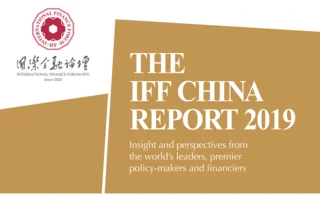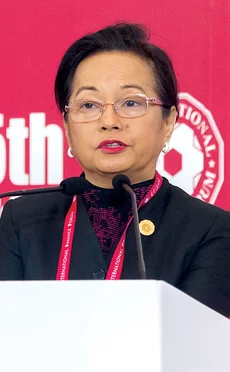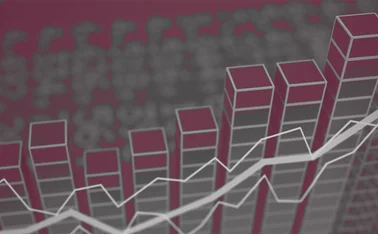
Full circle – Globalisation rises again in the East


The British historian A.G. Hopkins traces the beginnings of globalisation to the East – as far back as the Silk Route of the Han dynasty 2,000 years ago. But, for post-colonial globalisation, the first watershed event was the Bretton Woods Conference in 1944, which sought to design the new global financial order after World War II. The war had seen a struggle between two political systems in the West. On one side were countries such as the UK and the US, which were founded on a liberal political philosophy and an economic system of free trade. On the opposing side were countries oriented towards a rightist political philosophy and an economic system tending towards centralisation, such as Germany and Italy.
The US emerged from the war and the Bretton Woods Conference as the dominant player in the West, its economic ideas embodied in institutions such as the World Bank, the International Monetary Fund and the General Agreement on Tariffs and Trade.

During the Cold War, the West was challenged by a new East: no longer colonial, but still reflecting political and economic thinking that was different from the West. The term ‘globalisation’ appeared in the dictionary for the first time in 1961, although it was rarely used for three decades.
In 1978, China launched its bold policy of reform and
‘opening-up’. Paramount leader Deng Xiaoping explained in 1984: “The present world is open. One important reason for China’s backwardness after the Industrial Revolution in Western countries was its closed-door policy.”
Another watershed event in post-colonial globalisation was the fall of the Berlin Wall in 1989, which signified the West’s victory in the Cold War. The Western economic system stood on the verge of total global dominance and, less than a decade later, the Western concept of globalisation was enjoying its heyday, perhaps its high-water mark, embodied in the World Trade Organization and regional groupings such as the Association of Southeast Asian Nations Free-Trade Area (AFTA).
During this pinnacle of globalisation in the mid-1990s, the Philippines lowered its tariffs even beyond its commitments under AFTA. But by the time I became president of the country in 2001, the aftereffects of the 1997 Asian financial crisis and the events of September 11, 2001 were making themselves felt, and the Philippines’ fiscal, external and trade position had weakened. Thus it was now up to the domestic economy and manufacturing sector, which my government encouraged with tariff signals. I slowed the pace of the trade liberalisation programme to AFTA minimums, and took full advantage of all permitted exemption windows, such as for our proposed naphtha-cracking technology.
I favour globalisation and free trade. But not all countries are at the same stage of economic, political and social development, so the ideals of globalisation and free trade must sometimes be tempered by the realities within individual countries. Each country must judge for itself how to respond to globalisation, and at what pace. By making such adjustments, the Philippines has stayed the course of globalisation and is now looking for ways to build an environment inclusive and beneficial to small and medium-sized enterprises.
Economic globalisation – Challenges and prospects
Looking into the future, two developments stand out as particularly interesting. Since 1978, when it first opened up, China has risen to become the world’s second-largest economy. I visited China in the mid‑1970s, and have witnessed the entire breathtaking history of its 40‑year achievement. China’s success raises a question: in the face of widely accepted dogma that the best path to development is the Western model of government and globalised economics, what are we to make of the phenomenon that is China?
China’s transformation is a triumph of socialism with Chinese characteristics for a new era. In defining this system, Deng said: “The fundamental task for the socialist stage is to develop the productive forces.” He added: “Our experiences show that China cannot rebuild itself behind closed doors and it cannot develop in isolation from the rest of the world.”
Socialism with Chinese characteristics means reform and opening-up. Now, just as the historian Hopkins emphasised globalisation has non-Western as well as Western origins, 21st-century globalised economics is no longer just a Western model.
The second development is the rise of anti-globalisation or anti-open border sentiment in favour of old-style nationalism in the US and some parts of Europe. Is this a passing phase, or has the pendulum really begun to swing the other way? Protectionism has emerged in the US, previously the champion of globalisation, and pessimists now speak of the end of economic globalisation.
But President Xi Jinping has reaffirmed that China will continue to open up, and protectionism in the US provides China with a reason to step up its support to the Regional Comprehensive Economic Partnership (RCEP), now potentially the world’s largest economic bloc.
New globalisation – The future path
More optimistic analysts point to a new type of globalisation, driven as much by the East as the West. That is not far-fetched, given that China is on the verge of becoming the largest economy in the world. The history of globalisation will then come full circle, from the original Silk Route to the Belt and Road Initiative (BRI) of today. Indeed, some experts describe the BRI as ‘globalisation 2.0’.
Amitav Acharya, a distinguished professor of international relations at American University, Washington, DC, has said the term globalisation 2.0 is more about investment, infrastructure and development than merely trade. This is consistent with my view that trade and investment relationships – for example, those governed by regional agreements such as RCEP – are the ‘software’ that provides a framework for world trade and investment to thrive within. But ‘hardware’ is also needed, and this is where the BRI can contribute, building the bricks-and-mortar infrastructures without which international trade and investments cannot flourish.
Consulting firm McKinsey suggests that, rather than globalisation being in retreat, it is becoming a more digital phenomenon. In this new globalisation, it is no surprise Tencent and Alibaba are among the 10 most valuable companies in the world, given China’s fertile environment for technology.
China has demonstrated to the world rapid economic growth and modernisation is possible through a combination of vision, political will, and open and responsible relations with other nations. President Xi’s attitude is that, as China becomes a fully modern economy, it will simultaneously strive for partnership in growth and development with its neighbours. This enlightened attitude provides a foundation for the future path for the new globalisation.
Only users who have a paid subscription or are part of a corporate subscription are able to print or copy content.
To access these options, along with all other subscription benefits, please contact info@centralbanking.com or view our subscription options here: http://subscriptions.centralbanking.com/subscribe
You are currently unable to print this content. Please contact info@centralbanking.com to find out more.
You are currently unable to copy this content. Please contact info@centralbanking.com to find out more.
Copyright Infopro Digital Limited. All rights reserved.
As outlined in our terms and conditions, https://www.infopro-digital.com/terms-and-conditions/subscriptions/ (point 2.4), printing is limited to a single copy.
If you would like to purchase additional rights please email info@centralbanking.com
Copyright Infopro Digital Limited. All rights reserved.
You may share this content using our article tools. As outlined in our terms and conditions, https://www.infopro-digital.com/terms-and-conditions/subscriptions/ (clause 2.4), an Authorised User may only make one copy of the materials for their own personal use. You must also comply with the restrictions in clause 2.5.
If you would like to purchase additional rights please email info@centralbanking.com







